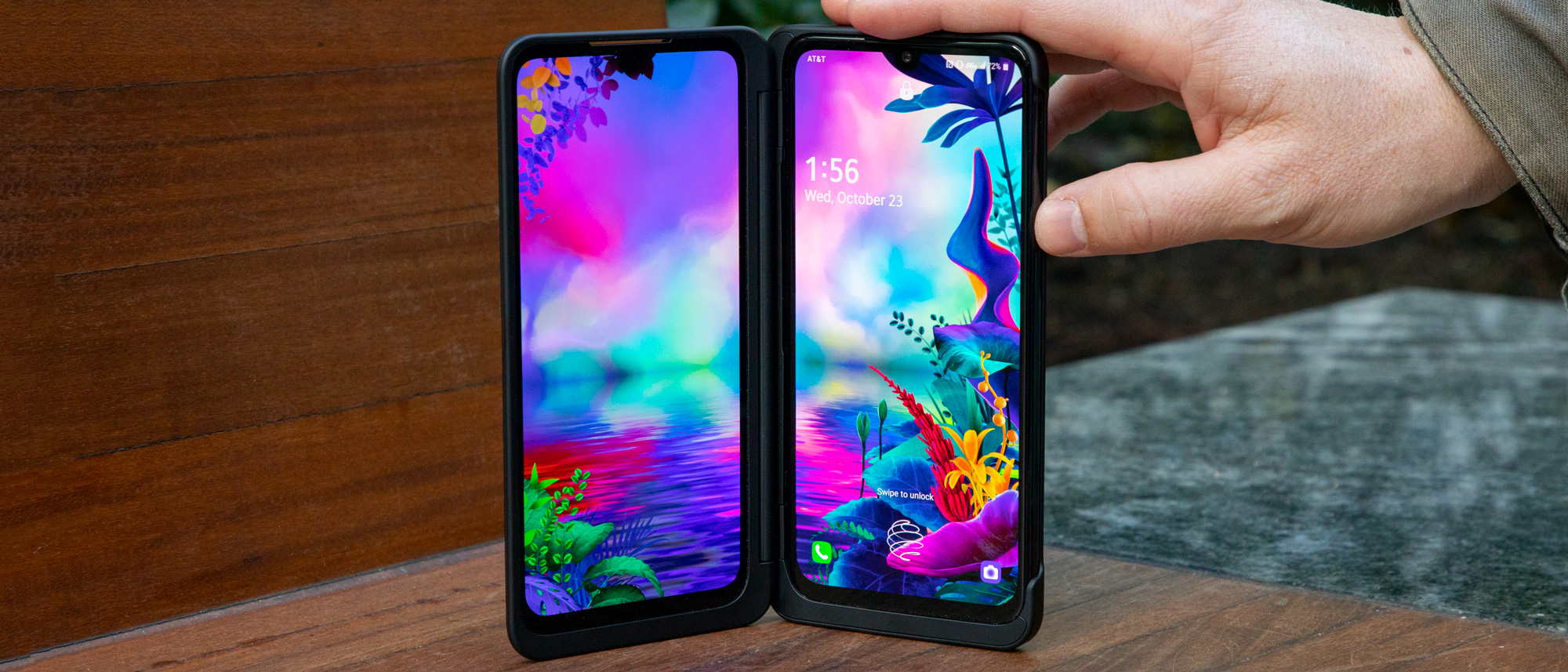TechRadar Verdict
The LG G8X's appeal may be niche, but it's an interesting concept that offers an alternative to foldable phones that gives budget-conscious buyers more screen for whatever they want to do on their phone. While the core device isn't too exciting, it packs the leading Snapdragon 855 processor and doesn't lack in performance - but whether to buy really boils down to how much one wants more screen real estate.
Pros
- +
Affordable two-screen solution
- +
Neat gaming features
- +
Dual Screen handy for watching media
Cons
- -
Somewhat wonky multi-screen software
- -
Poor fingerprint sensor
- -
Limited multi-screen features
Why you can trust TechRadar
Two minute review
The LG G8X, strictly speaking, is a mid-year iteration on the LG G8 that has respectable specs for its price but is a bit lacking in camera quality versus budget flagships like the OnePlus 7T Pro, iPhone 11, or Samsung Galaxy S10e.
But this review also considers the LG Dual Screen, which comes packaged with the LG G8X - and combined, they offer an affordable and less radical alternative to pricey foldables that manage to be more than just a stopgap solution.
It's not a perfect solution - the software is a bit buggy, the in-screen fingerprint sensor is unreliable, and the front cover's two-inch microscreen leaves much to be desired. But the combination of these two devices is affordable and delivers on its promise.
If you want more than two screens to work, play, or simply enjoy, the LG G8X is a great pick for the price.
That said, don’t expect a revolutionary device - or even some of the novel functionality coming with foldable phones. The display on the front of the Dual Screen, for instance, is small and monochrome - essentially a modern-day beeper - so you can’t do things like quickly view texts or find your location on Google Maps, which you could do on a closed Samsung Galaxy Fold.
Instead, you’ll have to pry open the G8X-and-Dual Screen every time you need to check more than the time. Given the poor fingerprint scanner, this is more annoying that it should be.
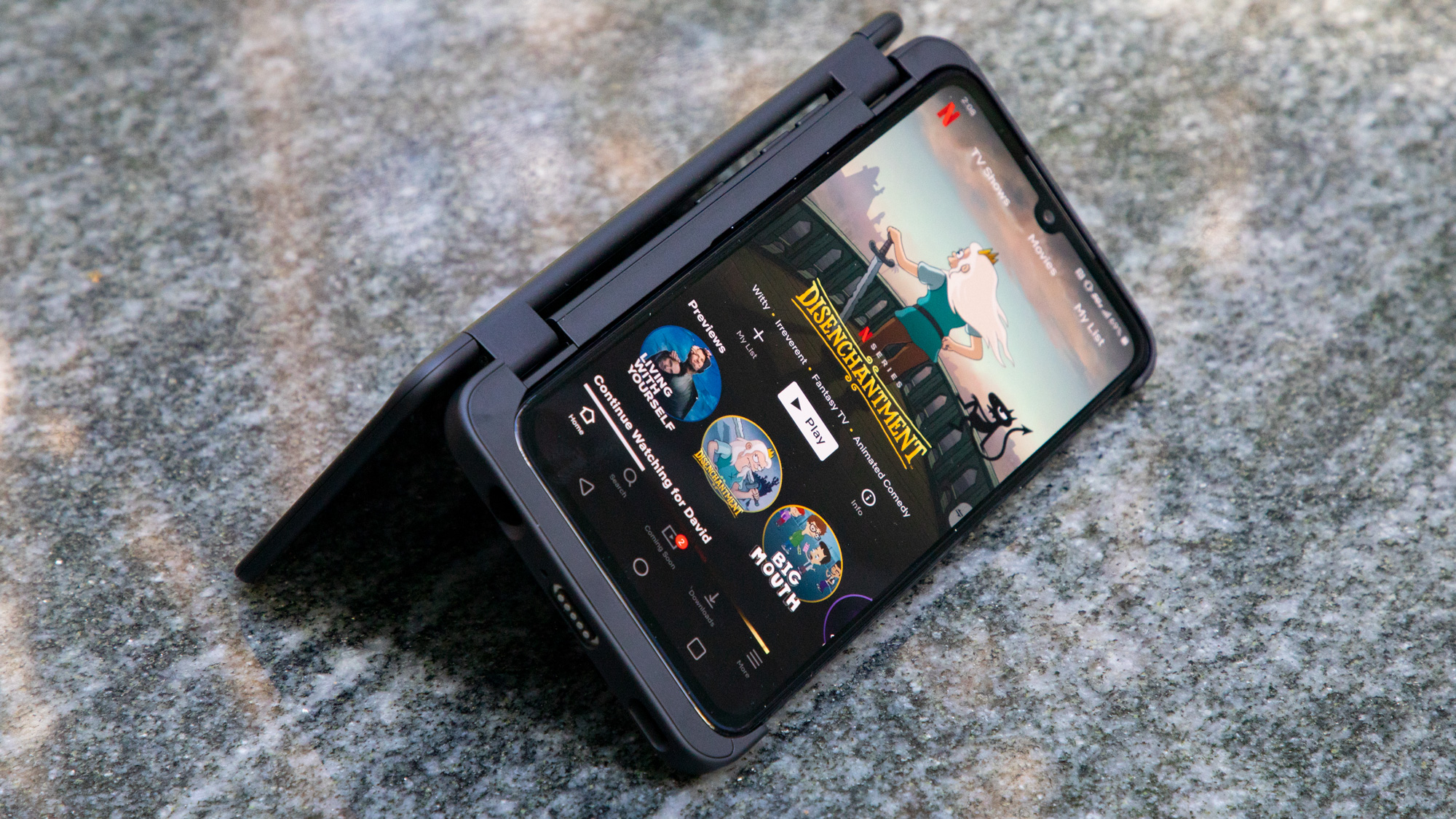
It’s ultimately a two-handed device when it’s docked, essentially operating like a smartphone in a folio case - but there are neat positives to that, like being able to unfold the second screen around its surprisingly robust hinge to prop it up (“tenting”) like a 2-in-1 laptop to watch videos.
Neat little joys like the capability to screenshot what’s on one screen directly into a text message you’re composing on the other show that LG thought about what users would really want to do with dual displays.
Thankfully, this includes the obvious gaming possibility: turning one of the screens into a controller. LG went the extra mile here, providing some sample layouts (racing, arcade stick, gamepad) along with the option to build your own, mapping screen real estate to virtual buttons or thumbsticks you can shrink or expand to your preference.
This is the LG G8X in a nutshell: a robust semi-innovative smartphone with thoughtful features that is still hampered by middling software. That’s mitigated somewhat by its very affordable price, providing a semi-foldable experience at the price of a more affordable flagship.
The appeal is a bit niche, but for those who aren’t ready to plunk down serious coin for the still-finicky first generation of foldables, the LG G8X is worth investigating.
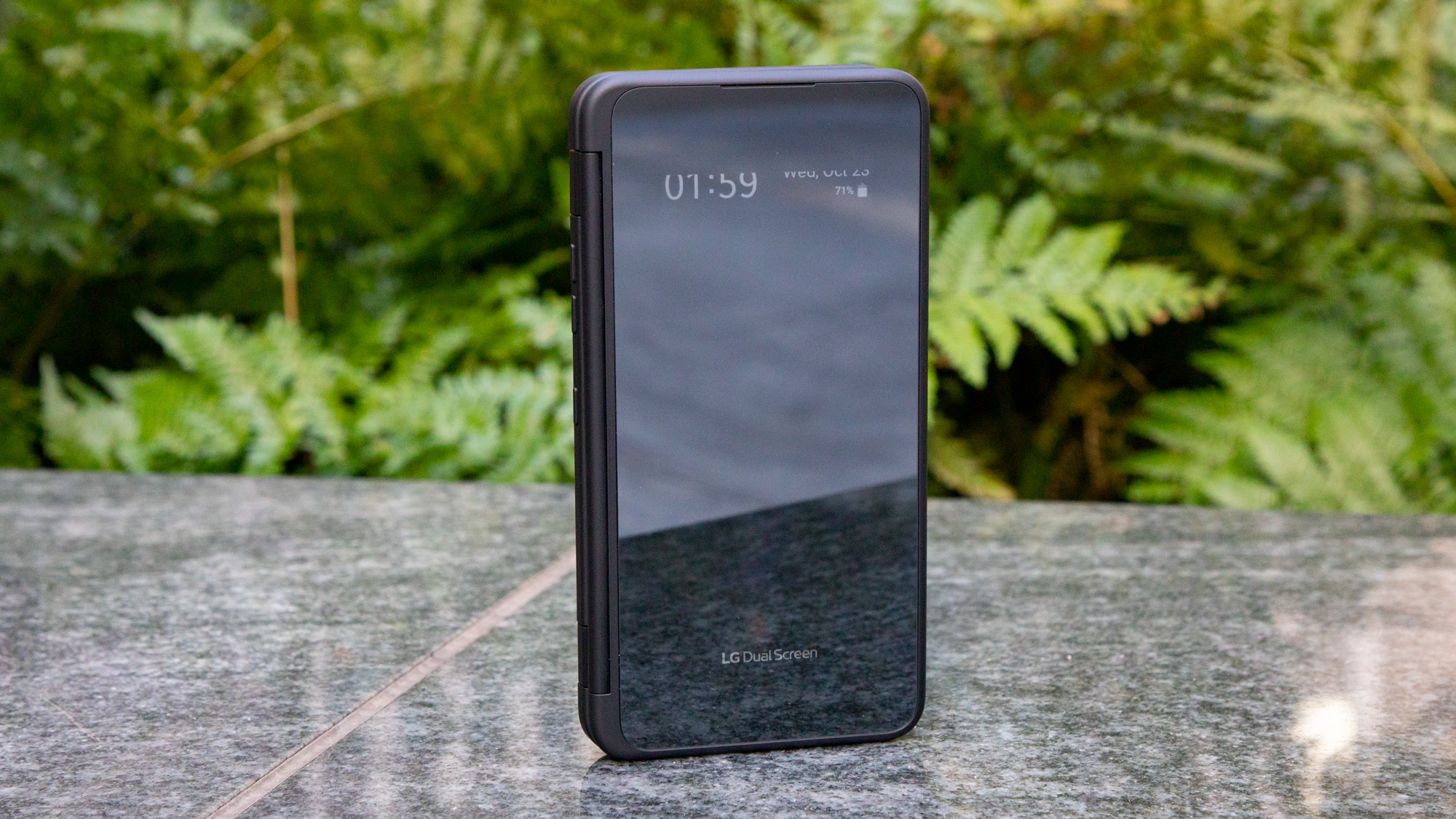
LG G8X release date and price
The LG G8X paired with the LG Dual Screen was first revealed at IFA 2019, and will go on sale in the US starting November 1. While the phone will sell for $699 (around £543, AU$1,017), some retailers will throw in the $199 Dual Screen for free.
It’s unclear when the phone will come to the UK or Australia, plus we don't know how much it'll cost there either.
You can get it even cheaper through Sprint in the US, which is offering both devices for $15 per month (after a $16.21/month credit) for 18 months - essentially getting the phone for $270. The phone and Dual Screen combo will also be available through AT&T.

Design
The LG G8X by itself looks, unsurprisingly, exactly like the LG G8 from which it iterated: a sleek black rectangle (glass sandwiching a glossy metal rim) with teardrop notch, Google Assistant button on the left side and 3.5mm jack poking out the bottom next to a USB-C port. On its own, the handset isn't too exciting, but it’s not disappointing, either.
The LG Dual Screen works a lot like a folio case with a screen on the inside: slot the LG G8X in (literally plugging it in to a USB-C male end and snugly snapping within it at the top corners), turn on the phone, and a button appears on the right side allowing you to turn on and fiddle with the second display.
Don't expect a seamless display - the screens are separated by a hinge, and should be considered paired areas rather than a single extensive sheet. There is a Wide Mode where it feels more like one screen, but that's only available while browsing Chrome.
As we previously noted, the hinge is robust - you’ll be able to unfold to any degree and fold back without worrying it’ll sag. The case-like parts of the Dual Screen are matte plastic covering metal, protecting the G8X on the sides and back.
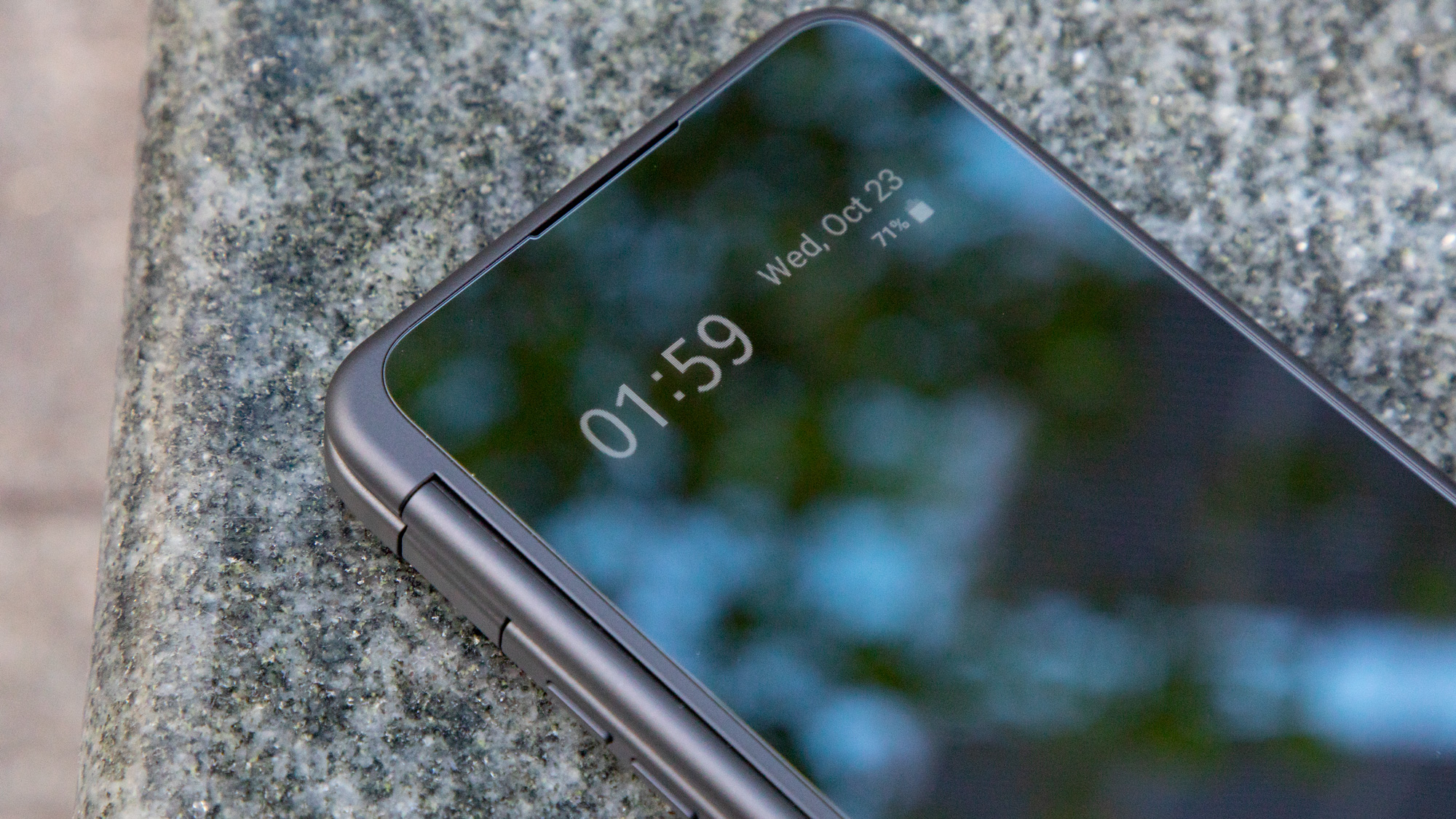
The outer front of the Dual Screen houses a 2.1-inch mini-screen, which is tastefully hidden amid an all-black cover underneath a front glass display until you summon it by hitting the lock button. It’s a classy way to smooth over that we don’t get a full-color, full-area front display - but it’s likely that one would be both pricey and sap battery.
As is, the Dual Screen runs off the G8X’s capacity without draining it much, which is an effective design compromise.
In any case, the Dual Screen’s glossy front glass is reflective enough to serve as a mirror in a pinch. It is a fingerprint magnet though.
The bottom of the Dual Screen has openings for the 3.5mm headphone jack (which ergo blocks plugs that aren’t straight) and a speaker. In the middle is a curious choice: a pin-and-magnet dock, which pairs with a matching unit that snaps into place and has a USB-C port.
It works a lot like Apple’s old MagSafe power solution, and with the same effect, breaking off to avoid snapping power cables or damaging the phone. Annoyingly, it’s also a lot weaker of a magnet, requiring you to brace the power cable on a nearby surface lest its weight yank it out.
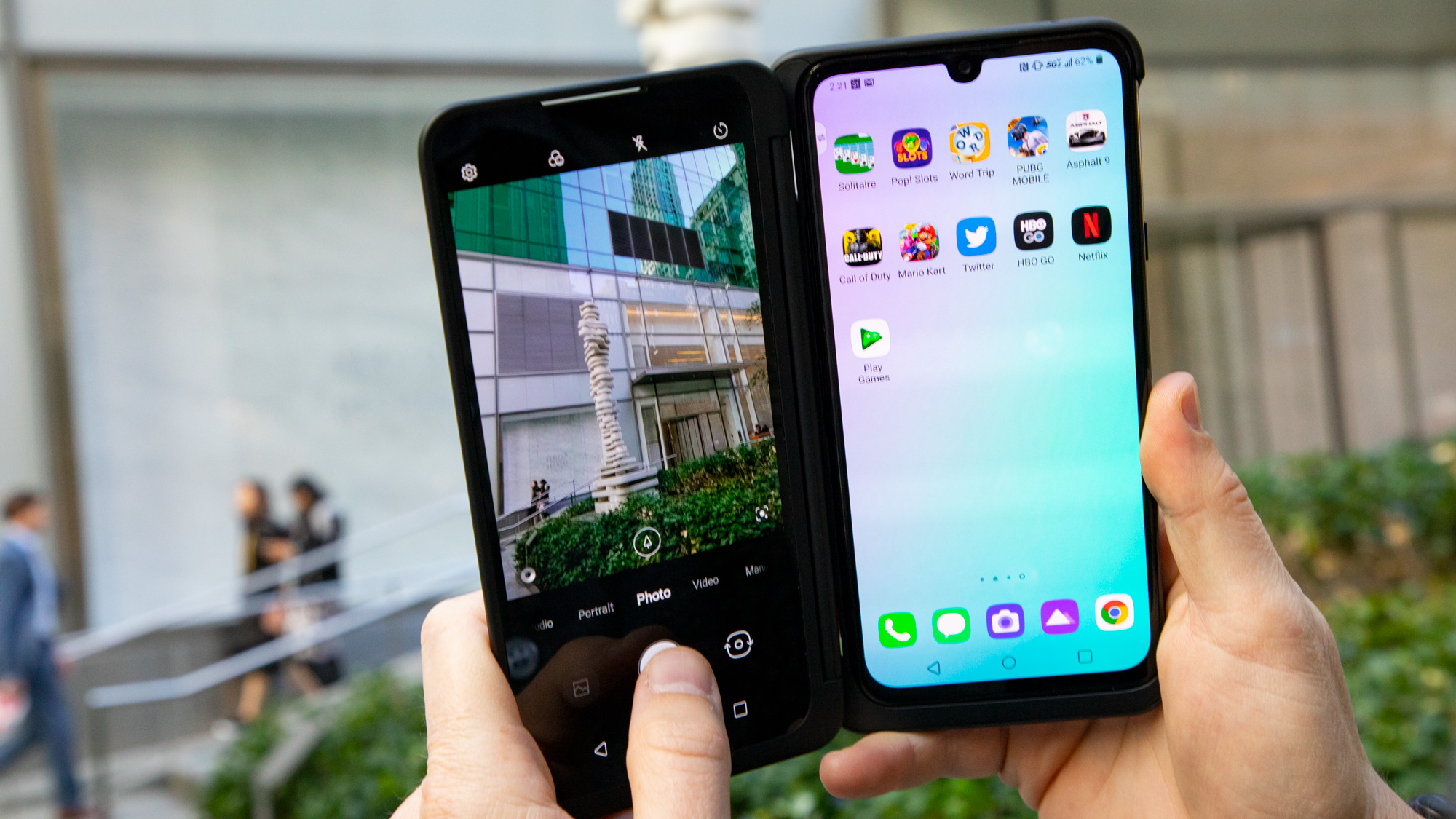
Display
The LG G8X has a 6.4-inch Full HD+ OLED display (2,340 x 1,080) with a tall 19.5:9 ratio, which is interestingly lower-resolution than the QHD+ screen of the LG G8. We expect that's another compromise for cost. Regardless, the display is sharper than many other FHD screens we’ve come across, which is no surprise with LG. The screen is great for media, showing the kind of deep shadows and brilliant colors favored by prestige television.
Or rather, screens: the display on the LG Dual Screen is identical to that of the G8X - even up to and including the teardrop notch, though it doesn’t have a front-facing camera. That’s the price of fidelity, it seems, as the engineering was too troublesome to account for a cutout on one screen but not the other.
Otherwise, you can either pair up both screens to have the same brightness or adjust them independently (say, if you’re watching a darker TV show on one screen and absently scrolling Twitter on the other). Since the screens are almost identical in spec, they can both run any app, and swapping an open app from one screen over to the other just takes a three-finger swipe - a gesture that’s surprisingly reliable.
To turn on the Dual Screen’s display, touch the dual-arrow gray button lying submerged on the G8X screen’s right side - press it and the second screen turns on, while pressing it again brings up a small menu with helpful features like swapping apps between them.
The G8X includes an in-display fingerprint sensor, and at the moment, it is... bad. It frequently takes three to four pressings at different angles to unlock, which is frustrating. When it does recognize fingerprints, it unlocks quickly, but it’s unclear which angle the sensor actually prefers.
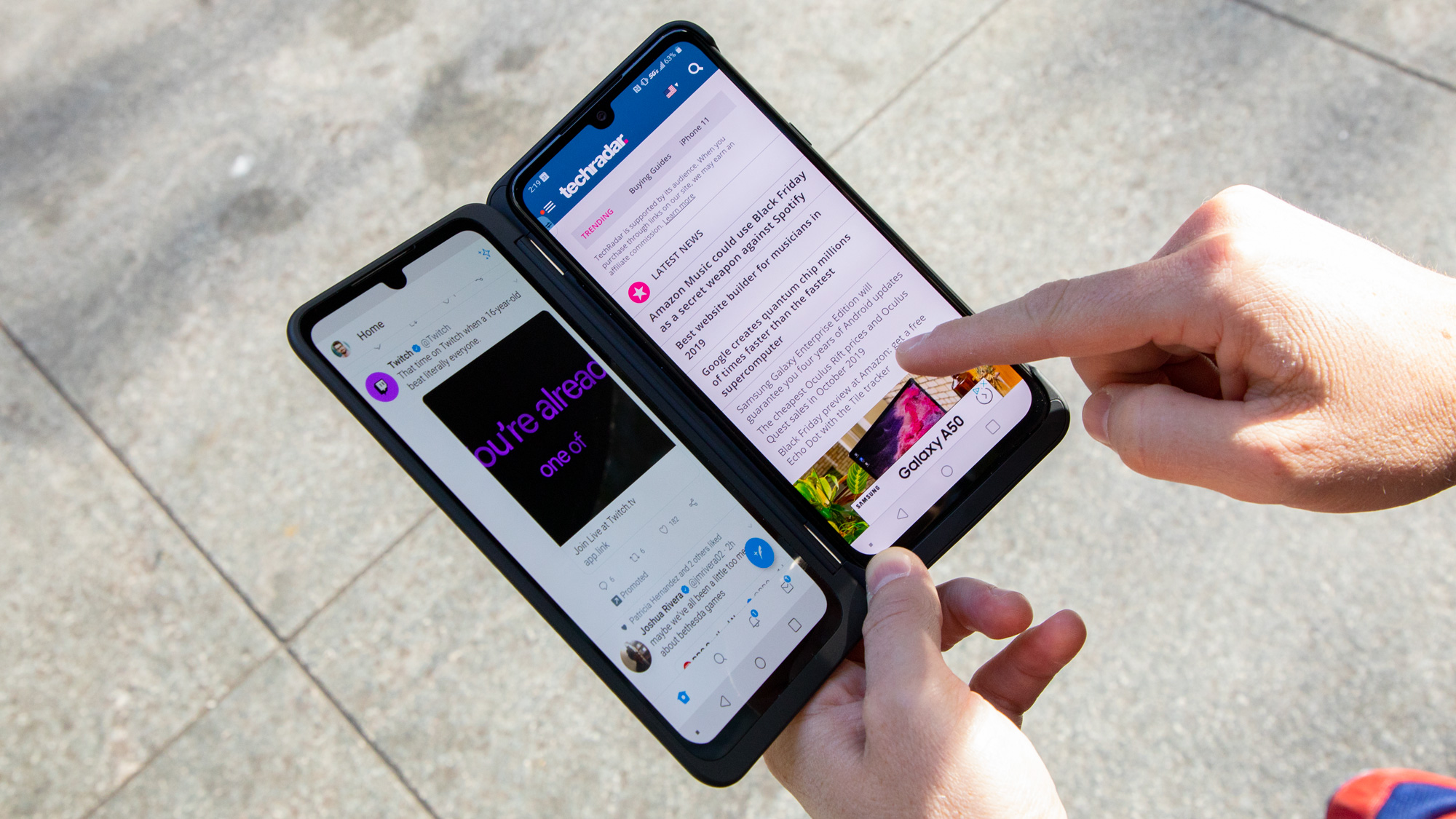
Using a dual-display phone
Welcome to the most important section in this whole review. In the end, is it fun to use a dual-screen phone? Yes, unequivocally. The pros outweigh the cons.
Much like proper foldables, it’s convenient to simply have more screen real estate. If you like using your phone to watch video, it’s great to have an entire separate screen to scroll through Twitter or text. It’s nice to have, and the whole kit isn’t too large or cumbersome to handle.
Amusingly enough, the G8X and Dual Screen benefit from not having as advanced of screen tech as proper foldables. Unlike the Galaxy Fold’s complex multi-apps-at-once configuration, LG’s setup is simple: two screens, and you can swap between them as expected, without any confusing bleedover or slippery interface.
It’s not a perfect interface, mind you - it’s a bit buggy, and exchanges between screens don’t always go off without a hitch. The game pad tech is prone to getting wonky - you’ll have to grapple with the UI when making a custom controller, which don’t always play nice with particular games. For instance, Call of Duty Mobile freaks out a bit when you’re trying to move, aim, and shoot at the same time - likely because the source game itself has been tweaked to combine certain features (firing and aiming) in a single press as a workaround for, well, clunky gaming on a smartphone.
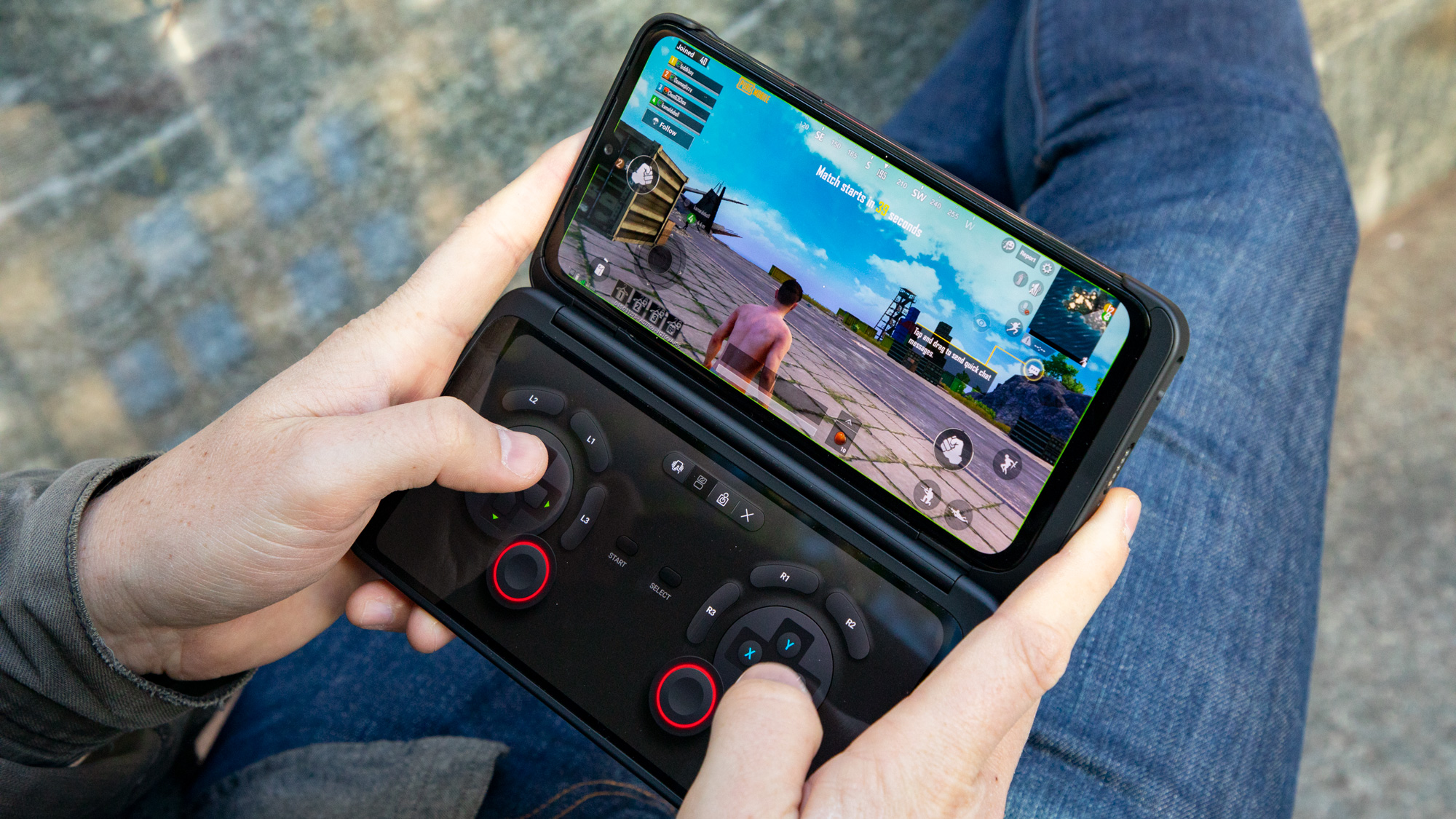
But all that aside, it’s also great to actually play a game and have the full real estate unencumbered by your fingers. There’s also a handful of gaming-specific tools in a menu next to the three-button nav that do things like disable alerts, mute media, take screenshots, and even look up the game on YouTube. It’s helpful and considerate in a way that more overbearing gaming features aren’t.
Watching media is unsurprisingly good on an phone with LG screens, especially when tenting up the phone to watch video. The sound coming from the speakers (both down from the bottom, which seems the louder one, and the earpiece) is fine but not exceptional - the Google Pixel 4 still holds the crown here.
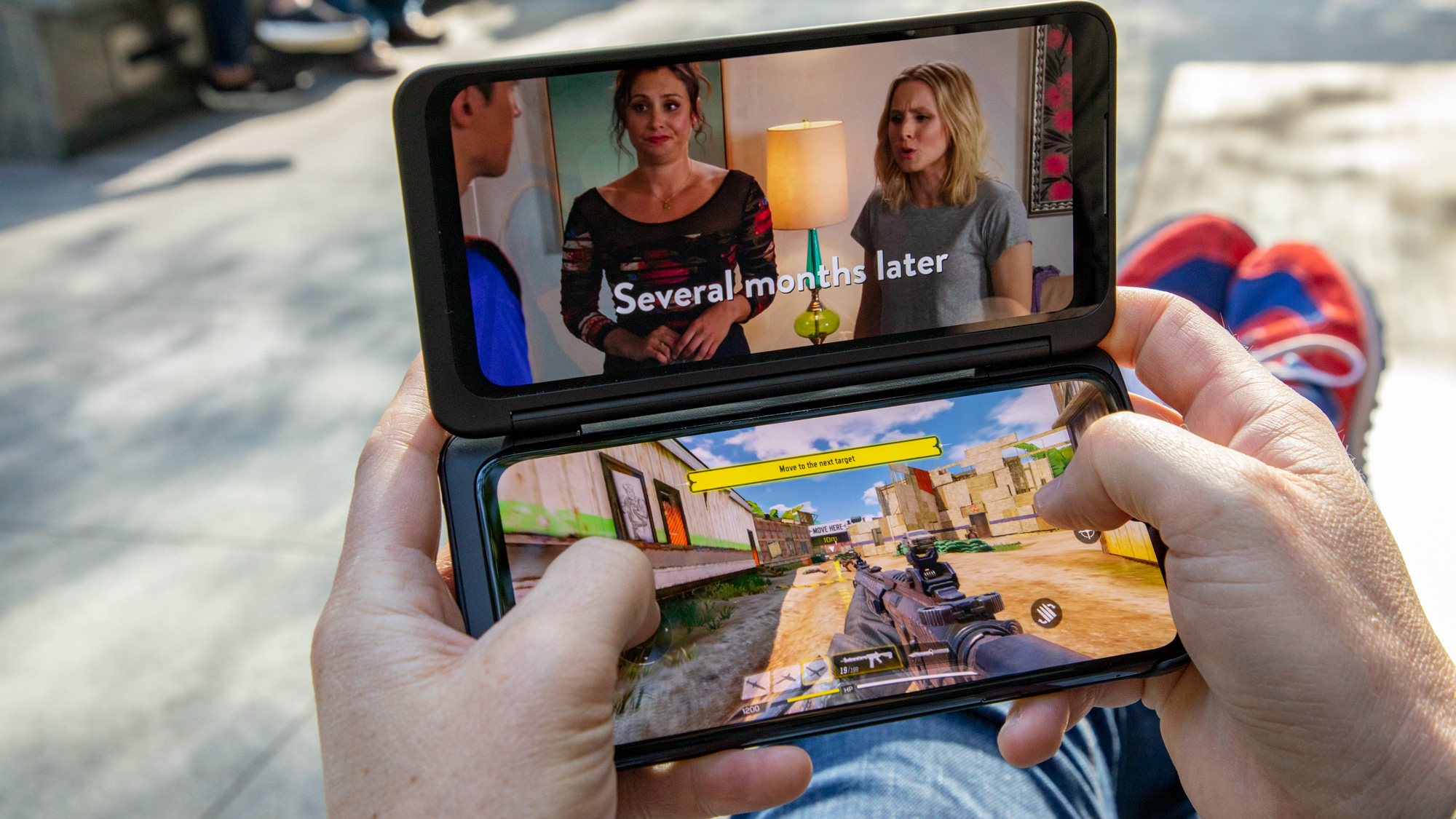
It’s a shame there aren’t more interactions with the interface - specifically, it would be fantastic to have Kindle, Libby and other smartphone book apps spill over both screens. You can do this in only one app at the moment, Chrome, in a mode called Wide Mode (found in the gray Dual Screen button menu). Text spills over from side to side and rotates with the phone. Compared to seamless foldables displays, it is, frankly, ugly - but as usable as it sounds, and not the worst experience.
There’s another feature, Extended View, which lets you use the second screen as a second tab of sorts for viewing photos or opening links, but this only works with LG’s Gallery and Naver Whale at the moment. And that’s it for novel uses of the screen.
But consider this final point: by using inflexible glass, the LG G8X and Dual Screen are using glass - a far more durable material than the flexible plastic used in the Galaxy Fold, which is easily scarred and scored by a simple fingernail, as JerryRigEverything pointed out in a video. And thanks to the Dual Screen case-folio design, that glass won’t get damaged with a fall.
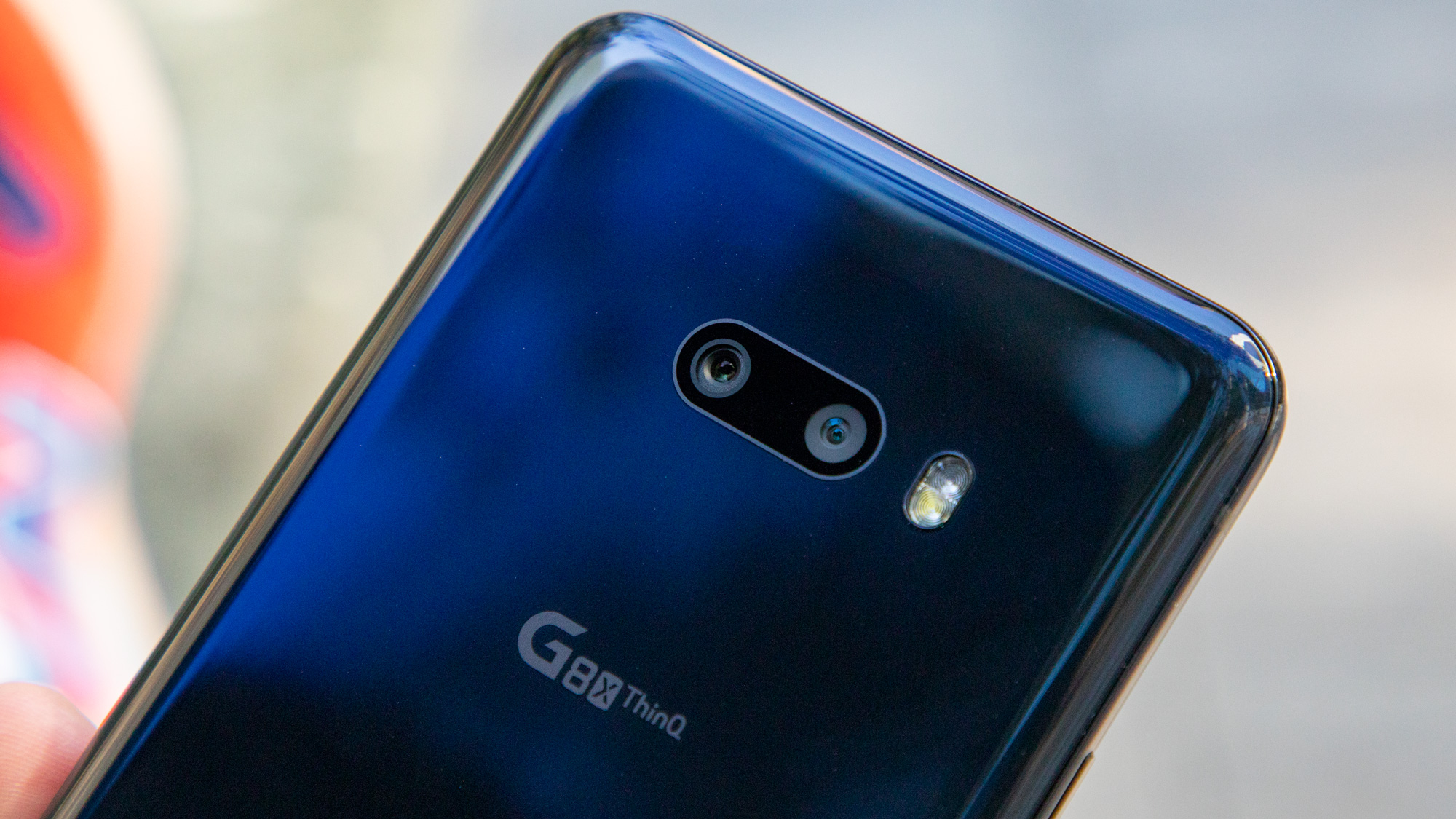
Camera
The LG G8X inherits the LG G8’s pair of rear standard (12MP f/1.8) and ultrawide (13MP f/2.4) lenses, though it dropped the megapixel value a bit in the latter in order to ramp up its field of view from 107 to a whopping 136 degrees in this phone - which outclasses the 120-ish degrees in most other flagships.
As for the picture quality, the rear shooters don’t put them high up in our best camera phone ranking, which is fine. Their photography stands out in the daylight, with a respectable night mode that makes up for a lack of sharpness with plenty of color - and while the latter technically works for the ultrawide lens, the resulting photos have so much grain and noise that it’s best left for well-lit situations.
The 32MP front-facing camera likewise performs better with lots of light, and comes with a beauty mode and fine but software-simulated portrait mode.
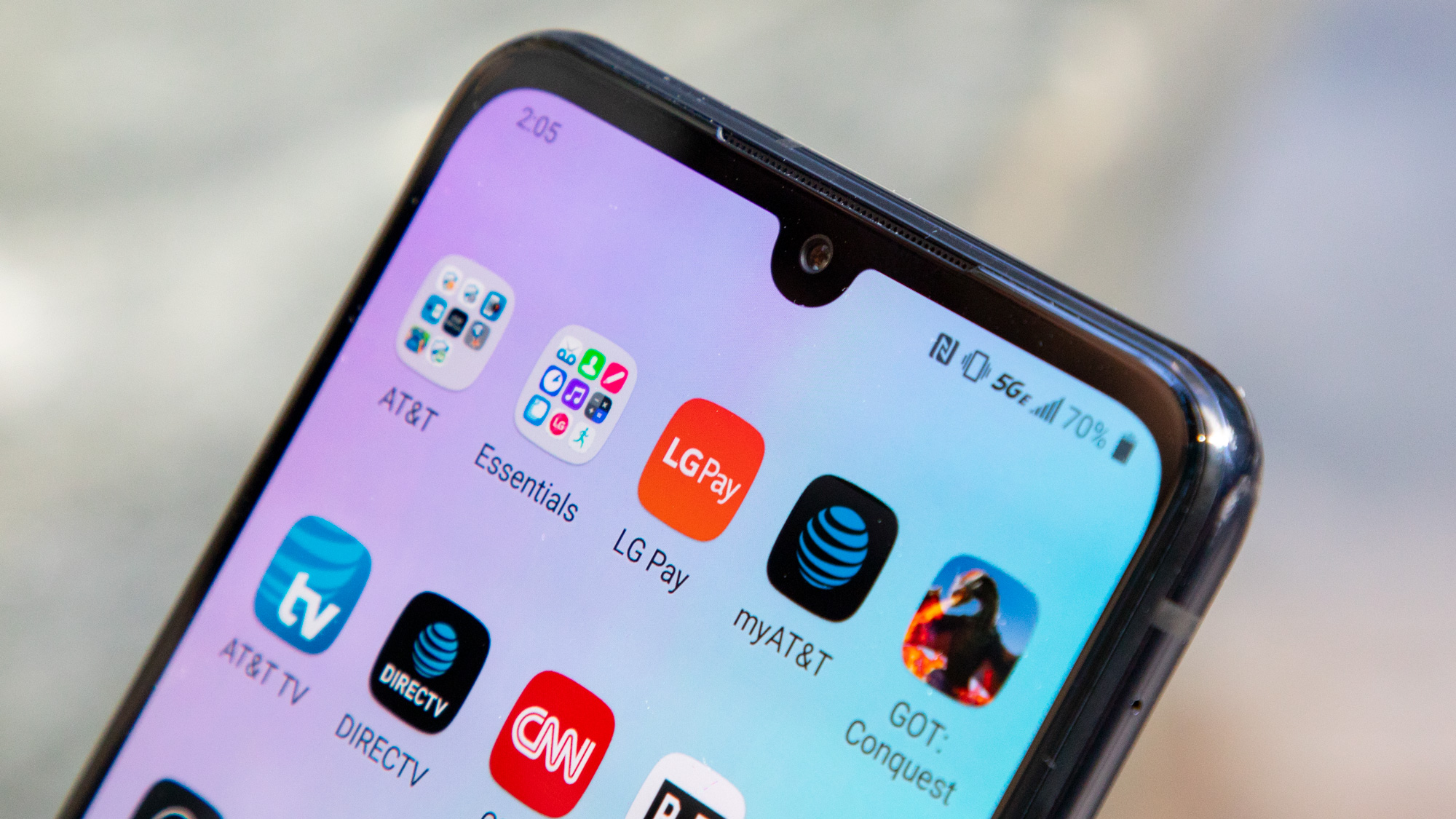
Interior shots show off the camera’s strengths, even in low light, and the depth mode is particularly good, even without portrait mode. Portrait video returns, as do a handful of modes (slo-mo, time-lapse, panorama), but it’s the manual modes that offer a bit more than other flagships, letting you tinker with a range of photography settings from shutter speed and ISO to white balance and even manual focus - in photos and video. Heck, while the Google Pixel 4 touted its Dual Exposure settings, the LG G8X lets you fiddle with brightness from the standard mode.
There are a couple extra perks that are new to the LG G8X. The first seems obvious: mirror mode replicates the viewfinder on the second screen, which you can then rotate around - handy if you wanted to take pictures around the corner.
If you switch over to video in the camera app, you might see a prompt for, we’re not kidding, ASMR video mode. Turns out that LG heard fans requesting the capability to record video at concerts, which requires high sensitivity to take in a performer from your spot in the crowd. Which also, it turns out, is good for capturing the rasps, whispers, and inflections in an ASMR-style video. Who knew.
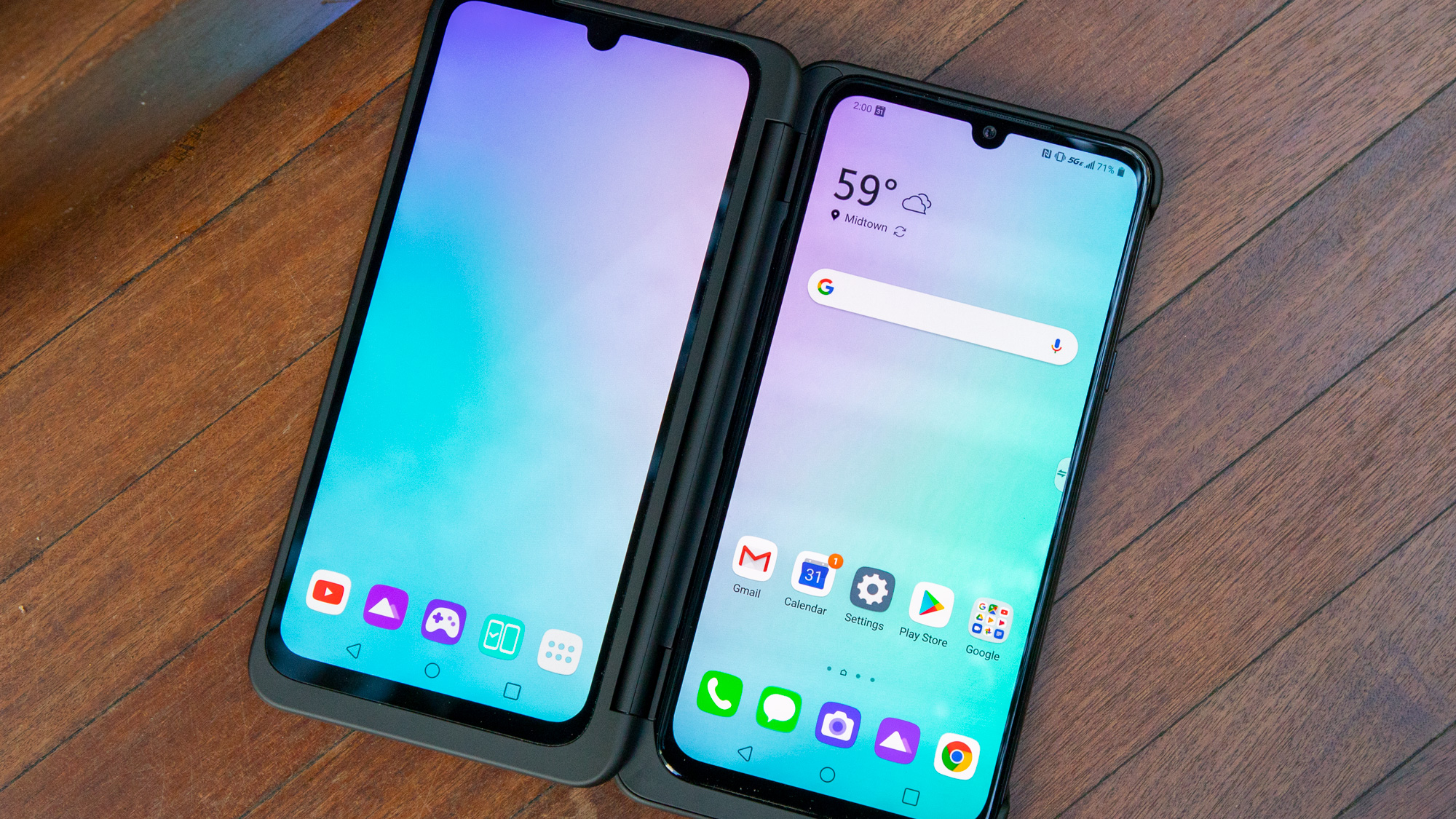
Performance
The LG G8X packs a Qualcomm Snapdragon 855 processor and 6GB of RAM, which runs the dual screens smoothly. Clearly, more screen real estate doesn’t exhaust this leading chip, which is extra-impressive given what the phone’s capable of doing simultaneously - like, say, play Netflix on one screen and HBO on the other. What? We’ve got so much to watch.
The phone comes in one storage size, 128GB, which is acceptable as the baseline for 2019 phones. You can expand it up to 2TB with microSD, amazingly.
Even more impressive: the phone comes with Android 9 Pie out of the box. Yes, you’ll have to wait for all the goodies in Android 10 (like Dark Mode), but that also means the LG G8X got its semi-foldable experience running without all the foldable-specific compatibility packed into the latest version of Android.
LG includes its usual suite of essential apps, which aren’t too extraneous - and heck, some are more feature-rich than expected, like the HD audio recorder that can guide you to pick up sound from mics at both ends of the phone for stereo sound. Across the phone, there are these nice touches - the keyboard, for instance, splits in half when the handset is rotated, with each set placed near where your thumbs would be. It makes the dual-screen format invisibly easier to use.
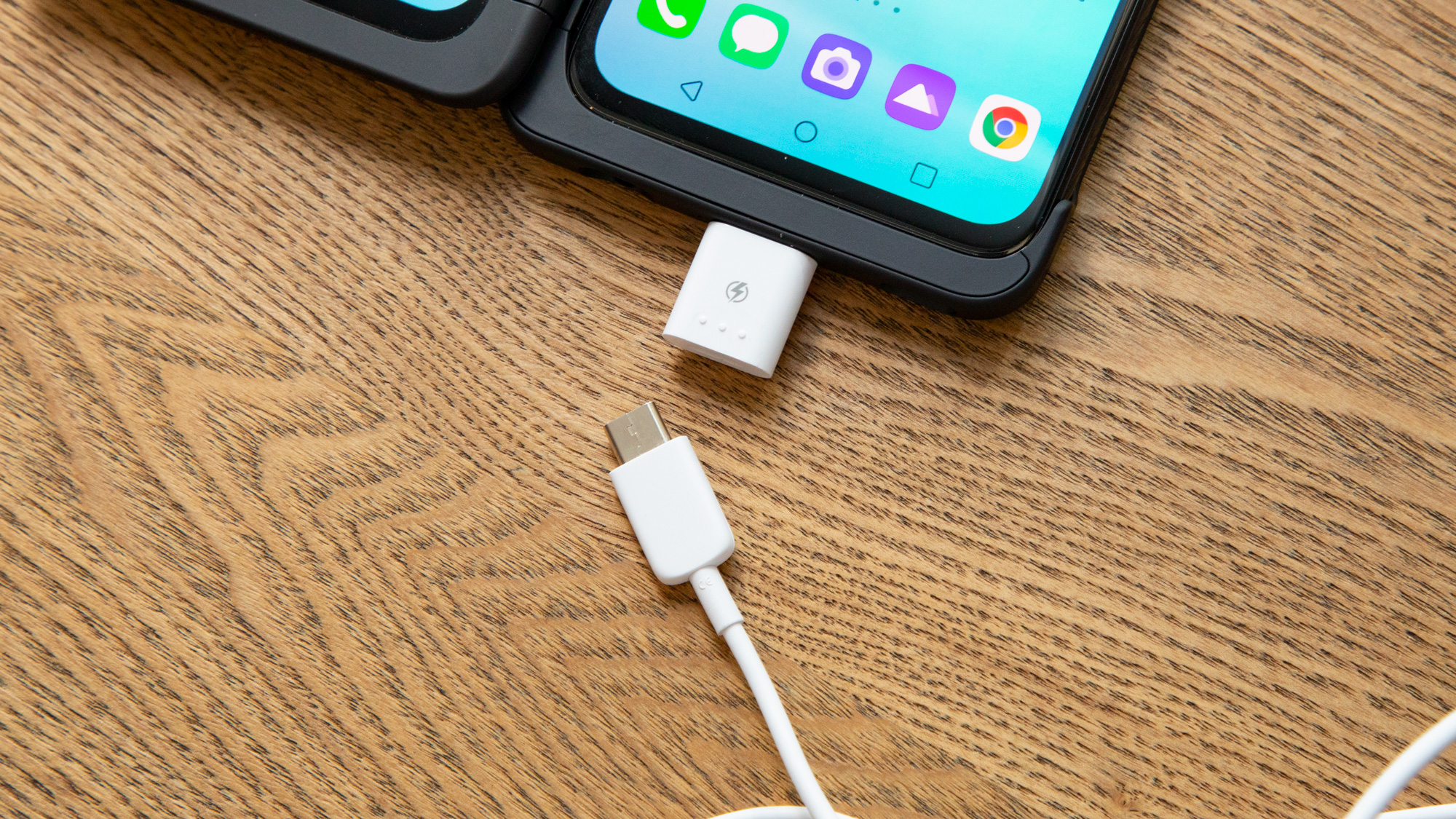
Battery
The LG G8X packs a 4,000mAh battery; the LG Dual Screen has...nothing. It runs off the G8X, which means, unsurprisingly, using that second screen will bleed the capacity even faster.
Thankfully, that battery goes a long way, lasting over a full day on normal use. Of course, your use probably won’t be that normal if you’re playing with that second screen, and we wouldn’t blame you. A little display discipline - remembering to switch off the extra lens when you’re not using it - can go a long way.
As mentioned above, the LG Dual Screen has a magnetic port at the bottom that snaps on to a connector (included in the box) with a USB-C port. It’s an elegant little solution that’s nevertheless could stand adhering more strongly to each other, a la Apple MagSafe. The G8X includes a fast charger in the box.
Buy it if…
You want a cheap entry to multi-screen and/or foldable phones
The LG G8X plus the LG Dual Screen, packaged together, is a great deal for its price. If you balked at pricey foldables but were intrigued by the possibility of having more screen real estate to play with, this is an affordable way to get a taste of that life.
You play games on your phone a lot
The LG G8X has plenty of different preset digital controllers and the capability of making your own custom one, as well as gaming-centric tools. Heck, you can even just have something else running on the second screen while you’re playing. It’s not the same as having a mobile gaming controller, but it’s the next best thing - and more compact to boot.
You like watching media on your phone
Even if you never end up using the LG Dual Screen much, it’s an effective kickstand and protective case all in one that props up one (or both) displays to watch at ideal angles.
Don’t buy it if…
You want the real foldables experience
Expensive foldable this isn’t - the LG G8X is a mid-evolution that presents some but certainly not all the advantages of true foldables. Its screen is not seamless. It will not turn as many heads.
You want the absolute classiest, highest-performing flagship
While the LG G8X has a Snapdragon 855, the leading Android chipset, it isn’t quite on par with the leading Samsung or Huawei phones in terms of RAM or in-the-box storage - nor does it have the same level of polish and features. If you want the flashiest flagship, this isn’t it.
You want a small phone
The LG G8X is not the biggest smartphone around, but at 196g and combined with the 130g LG Dual Screen, it’s a hefty package that takes up a ton of pocket space - and might be too big for some pockets.
- Our LG discount codes can help you save on your next purchase.
Comparisons
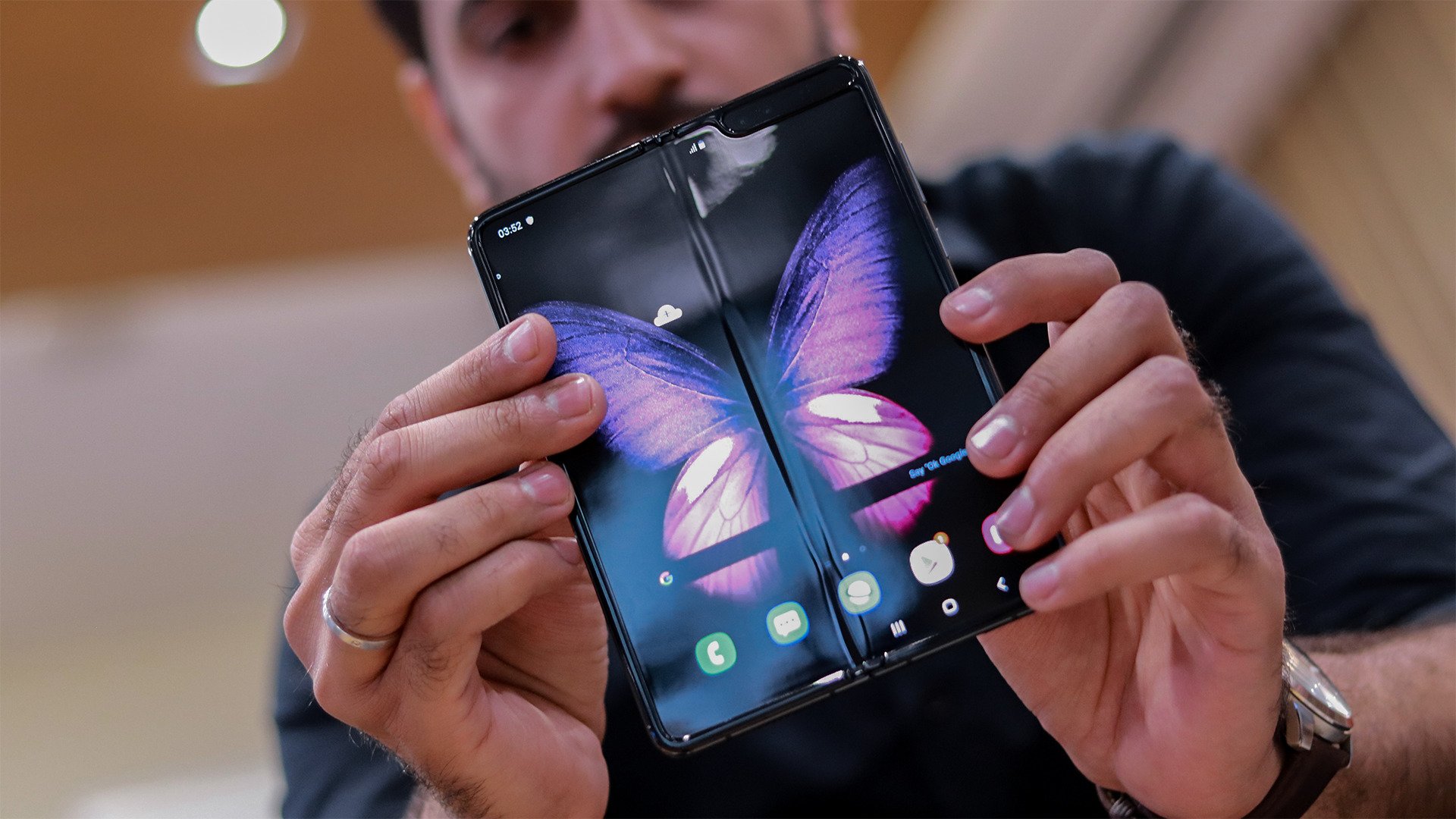
Samsung Galaxy Fold
The Samsung Galaxy Fold is the first true foldable from a big name manufacturer released to the world, and spotty as its durability was (and fragile in some ways as it still is), the device is being sold to consumers. It’s out there, it’s real, it folds, and it’s huge.
Not so much when it’s folded up to just its 4.6-inch outer screen, but when unfolded flat, its 7.3-inch seamless inner display is impressive. Here is the future.
Or rather, the first big step toward the future. Despite refinements, the Galaxy Fold’s plastic display is still not as robust as glass. It packs the same Snapdragon 855 chip as the LG G8X, but packs double the RAM (12GB) and 512GB of storage with a 4,380mAh battery (4G version). It dwarfs the G8X with six cameras. And, accordingly, it costs three times as much. You get what you pay for.
Read our full Samsung Galaxy Fold review
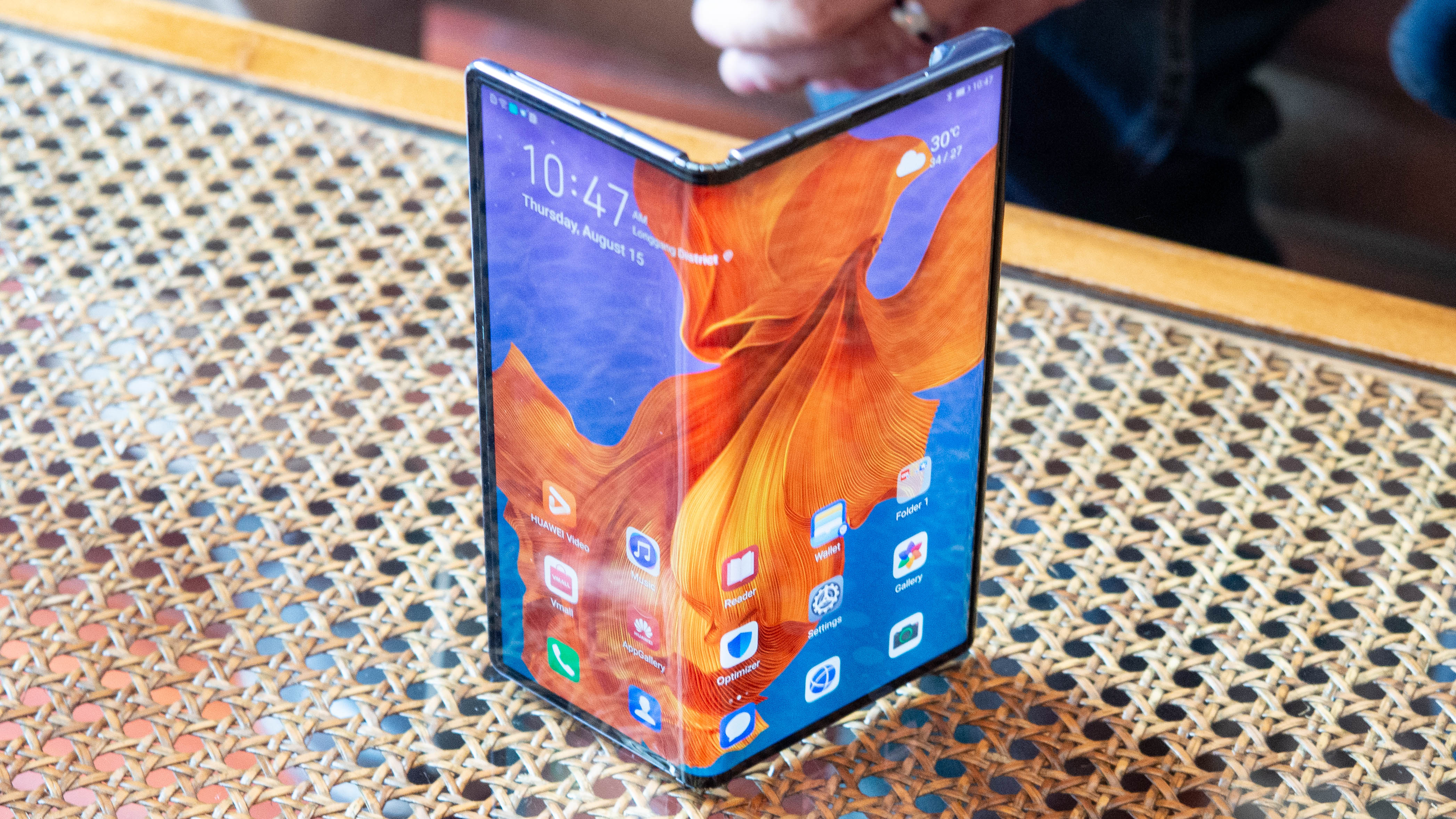
Huawei Mate X
The Huawei Mate X is a fitting enough alternative to the Fold: it’s an “outie” foldable, and thus simpler, with fewer cameras and an intriguing design that gives a “lip” to grab while wielding the foldable. It also shows you a preview when you ask someone to take a photo of you with it.
With a front screen of 6.6 inches folded up, the Mate X is large; unfolded flat, its 8-inch seamless display dwarfs the LG G8X. When we handled it, the foldable seemed ready to take the Galaxy Fold to task, especially after the latter’s fragility issues.
And then the US government intensified its Huawei ban, which endangered the company’s reliance on Android. Even when it finally comes out - at a reported 16,999CNH (roughly $2,400, £1,870, AU$3,500) - the device will be three to four times the price of the LG G8X, unavailable on US carriers, and potentially cut off from its operating system’s feature and security updates.
Read our Huawei Mate X hands on review
David is now a mobile reporter at Cnet. Formerly Mobile Editor, US for TechRadar, he covered phones, tablets, and wearables. He still thinks the iPhone 4 is the best-looking smartphone ever made. He's most interested in technology, gaming and culture – and where they overlap and change our lives. His current beat explores how our on-the-go existence is affected by new gadgets, carrier coverage expansions, and corporate strategy shifts.
